Soul, which hit Disney+ on Christmas Day, is the latest in a long line of Disney movies about death.
The film kills off its protagonist Joe Gardner in the first 10 minutes—except that Joe fights back. He ends up at the steps to the Great Beyond, but flees. The rest of the film chronicles his journey to avoid death and keep living, and to help an unborn soul, 22, find its spark to want to be born.
It’s certainly not a setup for a kid’s movie. There are barely any kids in Soul at all. But we’ve come to expect this kind of heavy fare from Disney/Pixar movies.
Disney knows a lot about death— and about near-death.
[Mild spoilers for various Disney, Pixar, and MCU films.]
In Onward, one of the central characters is already dead at the start of the film. The plot has two teenage brothers using a magical staff to resurrect their father for just one more day with him. Toy Story 4 revolves around the new character “Forky” repeatedly trying to kill himself. And Coco was about a boy who ends up in the land of the dead, where he meets all his dead relatives and tries to avoid a curse that will cause him to stay dead with them.
For a long time, a common thing people liked to say in praise of Pixar movies was that the movies do a nice job of catering to the parents in the theatre with a few winking jokes that sail over the children’s heads, dating back to a joke in the first Toy Story in 1995 about Woody suffering from “laser envy.” The consensus was that this was Pixar’s genius: keeping the adults in mind.
The truth, in recent years, is that many of these movies actually appeal more to the adults in the theater than the kids. The films exploit our fear of death to move us—fear that the children in the audience don’t yet feel.
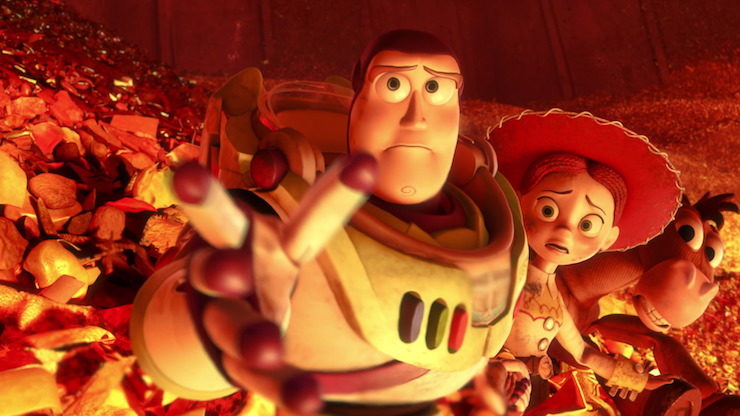
As the writer David Hajdu wrote about Toy Story 3 in 2010, “The toys are us.” In that installment of the franchise, the toys, Hajdu wrote, “feel the obsolescence of retirement… the anxiety of death’s approach.”
In the movie’s infamous “incinerator scene,” the toys end up in a landfill incinerator. As they try to gain their footing and stop sliding into the flames below, cowgirl Jessie yells to Buzz Lightyear, “What do we do?” Buzz looks at her and realizes there is nothing they can do, no escape ideas left. So he reaches out for her hand. She takes her horse Bullseye’s hoof, and he stops scrambling. Slinky Dog takes the piggy bank Ham’s foot. Mr. and Mrs. Potato Head join hands with Rex the dinosaur. Woody takes Buzz’s other hand, and then, with all of them linked up, they close their eyes and prepare to die.
That is extremely dark. I remember hearing the small gasps of the people nearest to me in the theater when I first saw it.
Buy the Book
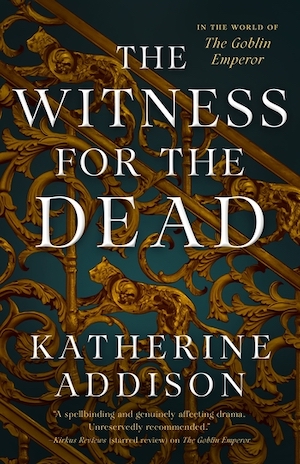

The Witness for the Dead
But there’s also a very adult form of comfort in the scene. The characters are like a family on a plane that’s crashing. They believe they’ve reached their end, and all that’s left is to experience it together. There’s a long shot of Jessie’s eyes widening as she looks at Buzz’s hand in hers and realizes this is the choice they’re making.
The toys end up saved by a deus ex machina claw from above—but your heart is still stuck in your throat for a minute after. Yes, the toys are plastic and plush, but their bravery in the face of death is real, and the weight of it is breathtaking. The incinerator scene remains arguably the most emotionally powerful scene I’ve seen in any animated movie.
Of course, scores of Disney movies feature early deaths of parents or spouses (Bambi; Lion King; Up; Frozen, to name a few). But it’s the reckoning with death that most moves us—when characters go all the way to the edge and prepare for the end.
It’s the human condition to know we are going to die. The reason it works so well with animated movies, in particular, is that we aren’t used to seeing animated characters reckon with that. It flips on its head the dated assumption many people still have that animated movies must, by their nature, be kiddie. (Soul rejects this label more than any prior Pixar movie.) These films may have storylines that children can follow, and heavy doses of cuteness, but are also able to grapple with existential questions without losing the kids.
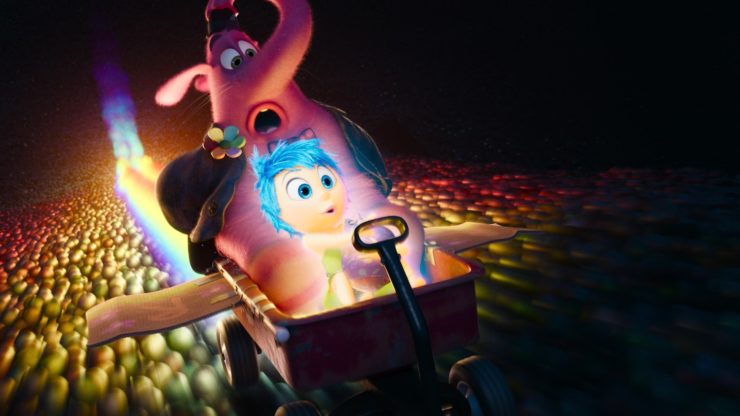
Another death scene in the Pixar pantheon that left adult viewers emotionally destroyed was in Inside Out (2015), to which Soul owes an obvious debt. The characters in the movie are emotions (Joy, Sadness, Fear) inside a little girl’s head, but when something goes haywire (caused by the girl’s family moving to a new place, a device also used in the first Toy Story), they have to journey to parts of the brain they’ve never seen. Late in the movie, Joy and Bing Bong, an elephant-clown creature who was the little girl’s imaginary friend when she was younger, get stuck down in a place where memories die—if they stay too long, they’ll vanish and never be remembered by the girl again.
Bing Bong stays behind and sacrifices himself so that Joy can escape. It is the death of a character, but even worse, and more symbolic, it is the death of a childhood memory for the girl.
Childhood memories, and their preciousness and precariousness, also give the most powerful scene in Coco (2017) its power. Miguel strums on his great-great-grandfather Hector’s guitar and sings “Remember Me” to his great-grandmother Coco, Hector’s daughter, who brightens up and recognizes the song. Coco is alive, and Hector is long dead, but the true memory of Hector had died until Miguel met him in the Land of the Dead and discovered his story.
It’s not just animated movies.
When half of the superheroes in Avengers: Infinity War—including fan favorites like Black Panther and Spider-Man—disintegrated at the end of the movie, it was shocking to audiences. (You can watch YouTube clips of audience members crying out, “No!”) Marvel went there: the bad guy won; the heroes failed; the movie ended. And even though Marvel fans knew that the next movie would surely bring the characters back, killing them off was extremely bold.
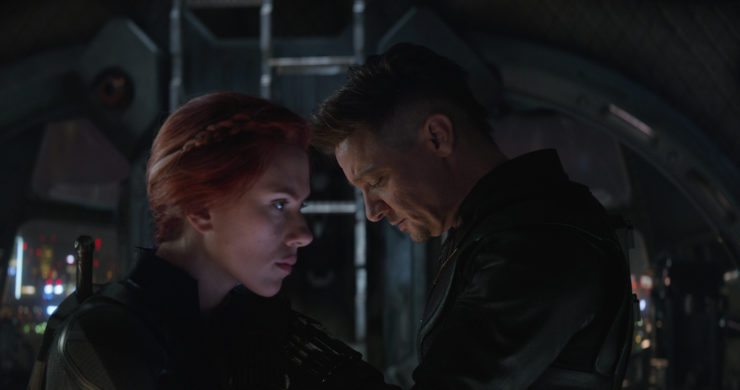
And yet a scene in the next installment, Avengers: Endgame, was arguably more emotionally powerful: when Hawkeye and Black Widow journey to the planet Vormir and realize one of them must die there in order for the Avengers to obtain another infinity stone. The two friends trip, shoot, and claw at each other in a grueling effort to be the one to die, a contest of self-sacrifice. That fight scene, with the audience aware one of them is about to die, is more moving than the shot of the outcome: one of them lying dead on the ground. Again, Disney reminds the adults in the room that we, too, will die. (Disney’s first Marvel streaming series, WandaVision, takes this to an extreme: an entire show whose premise rests on Wanda’s grief, and our memory of the on-screen death of Vision in Infinity War.)
The 2017 live-action Beauty and the Beast remake (not very good) has a similar moment toward its ending. In the remake, unlike in the 1991 animated classic, all of the characters in the Beast’s castle—Mrs. Potts, Cogsworth, Lumiére—actually do turn into stone before the curse is broken in time. We see each of them essentially die, just before everything is saved. The scene pushes the well-worn climactic moment further than the original ever did, making it just a little more adult, even within the confines of a fairy tale. (It was one of a handful of twists that made me fond of the remake, despite its unnecessariness). That was Disney doing its death trick.
Even the Winnie-the-Pooh adaptation Christopher Robin had a death reckoning. Christopher Robin, middle-aged and played by Ewan McGregor, says goodbye to his friends in the Hundred Acre Wood for the last time, he thinks. It’s a scene in which the look of the animals—they look like Steiff stuffed animals, scruffy and rough around the edges, rather than cute cartoons—is perfect, because the sadness on Pooh’s face is genuinely affecting. It’s the true end of Christopher Robin’s childhood, even though his childhood ended decades earlier. It is a death, of sorts.
All of these scenes of bracing for death, of loving farewells, of the end of a memory, owe a clear debt to foundational children’s literature like Winnie-the-Pooh (Disney didn’t own the rights to Pooh until 2001, by the way), The Velveteen Rabbit, and Corduroy. They exploit our love for the things we loved as children, and the horror at the idea of those things, and ourselves, dying.
Daniel Roberts is a business journalist in New York who has also written about books and pop culture for The Paris Review Daily, Air Mail, Lit Hub, Salon, NPR, PopMatters, The Awl, The Morning News, The Millions, The Rumpus, and more. He writes a book review Substack letter.










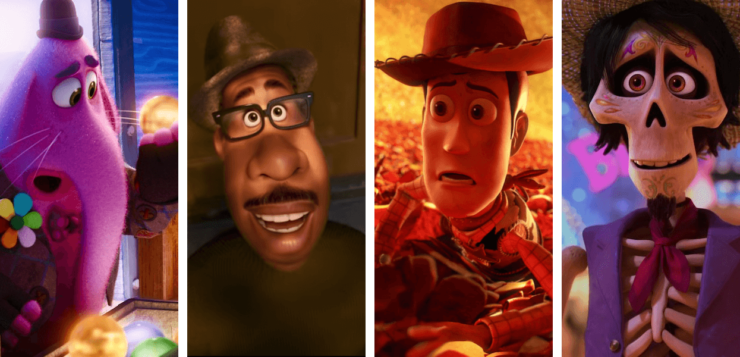
I was a kid when BAMBI hit the screens for a second or third time, and the death of Bambi’s mother hit hard. Many years later, I was in an almost empty department store near the movies section, and the newest release of Bambi was playing on a TV. The girl at the counter and I started bawling like kids when that gun went “bang!” The trauma never leaves.
earlier Disney films had brutal and scary deaths. I’m an adult but they still kinda scare me and send shivers down my spine…

I disagree that kids don’t have an awareness of death. Unless by ”kids” you mean the under 5 category, especially nowadays I would argue most kids have lost someone they know and are keenly aware of the finality of death, have dealt with loss and grief and as a parent of a 9-year-old, I can see the fear clearly. Sure, it’s mostly a fear of losing siblings or parents or pets, but it’s close enough to empathize with movies that deal with death.
As for Soul, I don’t think it is losing the younger audience because of the subject matter, but because the movie is a little bland and generic. They have had to dodge so many religious concepts when dealing with afterlife, that it became impersonal and vague. The characters are very one note and don’t fully engage with the story and the main character’s problem (failing to meet his expectations of life) is not relevant to children. Adults can appreciate an intellectual, distanced movie, but it is too much to expect from children.
” and our memory of the on-screen death of Vision in Endgame.”
He died, twice, in Infinity War…. just before the snap.
I watched Coco last year. I stood up and walked into our kitchen, and a wave of the most incredible grief and rememberance of my parents came over me, and I remember collapsing to the floor, wracked with sobs.
Amazing movie making
The first 10 minutes of “Up” continue to reduce me to a sniveling heap, but the entire movie is a portrayal of loss, grief, recovery and healing
That’s quite an assertion to make about the children in the audience. Do you have anything to back it up with?
The incinerator scene was pure nightmare-fuel horror for me, leaving no room for other emotions. It made me hate Toy Story 3, though it wasn’t the only source of horror in that film, simply the worst.
Ouch
in a world besieged with Doomscrolling, the phrase Disney movie clicks you over to time out, happy creatures, Tom Hanks etc …but as DR points out- not so fast. My wife is still traumatized by Bambi losing her parent to hunters and it fuels her disgust right up to gun legislation. Disney softens us up for some gut punches which are delivered by a multitude of endearing , BFF characters. I still defer to Cinderella ,but this points out that intelligence is being able to hold opposing thoughts simultaneously
Some of us happened to very much enjoy the 2017 remake of Beauty and the Beast. *shrugs*